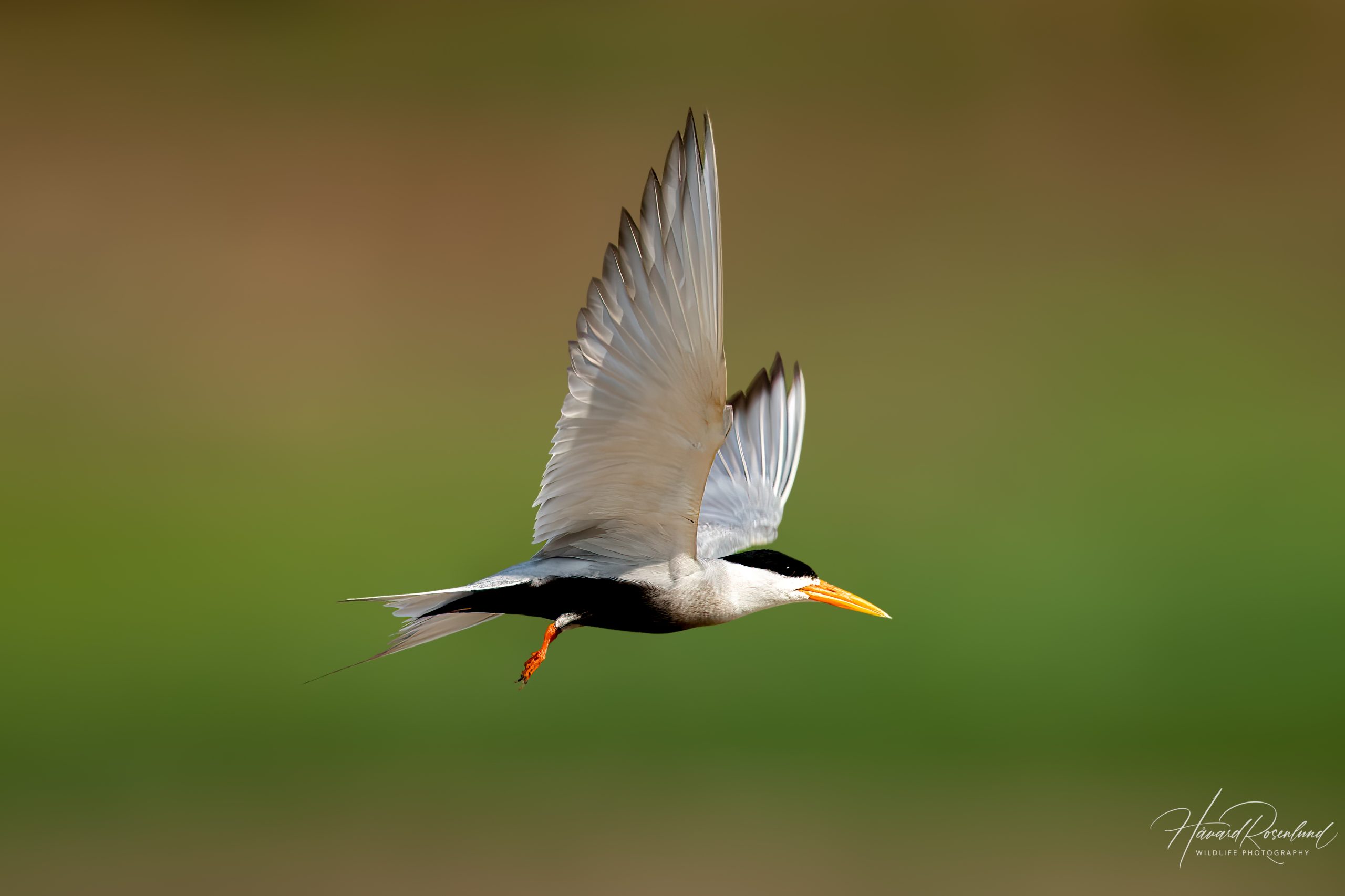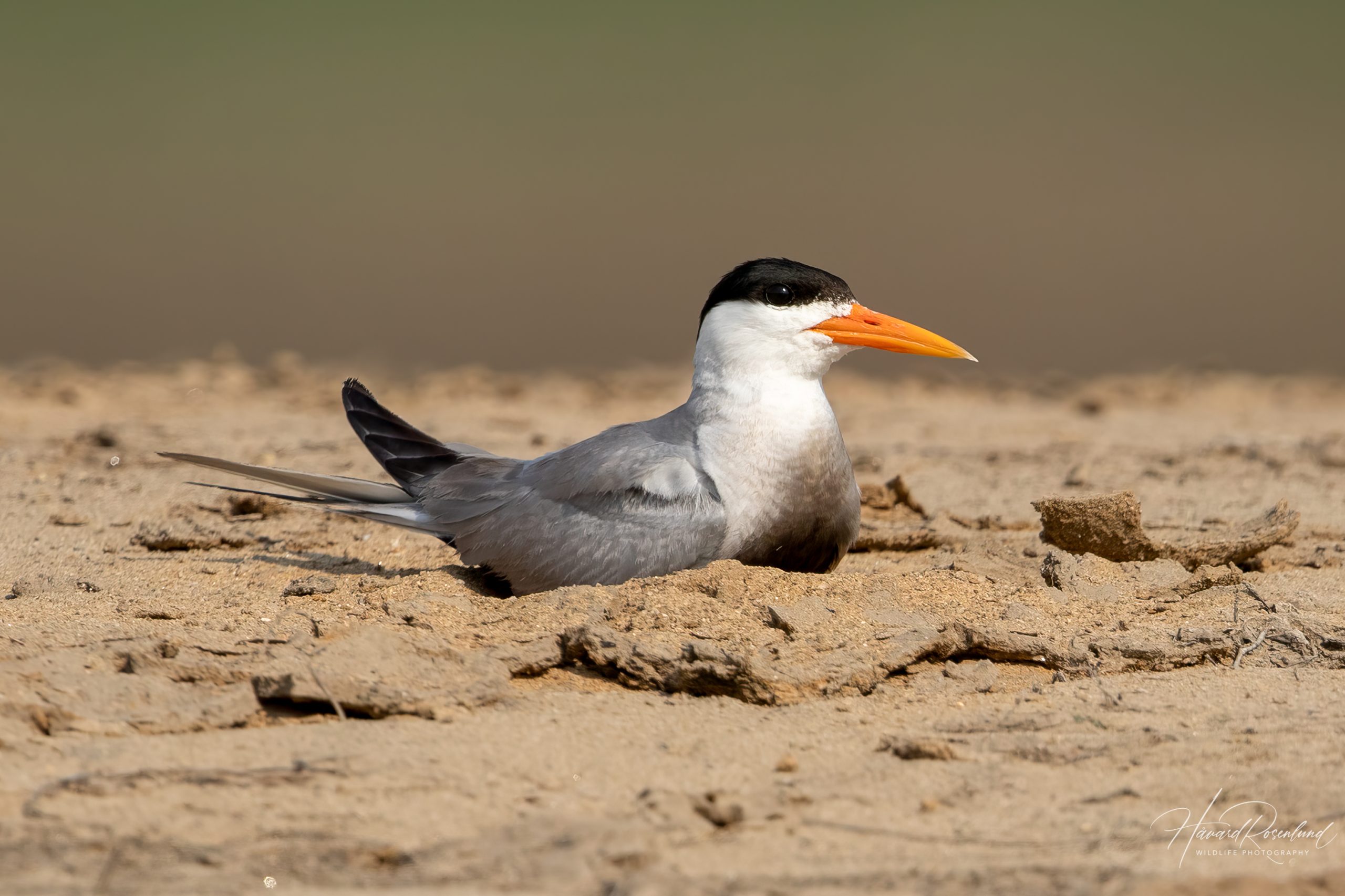Description
The black-bellied tern (Sterna acuticauda) is a rare and endangered tern found in areas of South and Southeast Asia, with most of the population residing in India. It is characterized by its distinctive black belly, which contrasts sharply with its pale grey and white upperparts and underwings. Adults typically measure around 32-35 cm (13-14 in) in length, with a wingspan of approximately 60–70 cm (24-28 in). This species has a sharp, pointed yellow-orange bill and bright red legs, which stand out against its otherwise monochromatic plumage. In non-breeding plumage it has a white belly, a black eye-band and a black tip to its bill. The species is sometimes confused with the more common river tern (Sterna aurantia), but can be distinguished by its darker belly in breeding plumage, a more orange bill, and overall smaller size.
Diet & habitat
The black-bellied tern is closely associated with freshwater ecosystems. It is commonly found along large rivers, lakes, and reservoirs, where it can forage and nest on sandy islands and riverbanks. The species prefers habitats that are free from heavy vegetation and with minimal human disturbance, allowing for unobstructed access to water for hunting.
The black-bellied tern primarily feeds on small fish and aquatic invertebrates. It hunts by flying low over the water, scanning for prey with its keen eyesight, and then diving swiftly to catch fish just below the surface. This species is also known to feed on insects, particularly during the breeding season when they are abundant near water bodies.
Behavior
The black-bellied tern is a highly social bird, often seen in small flocks, especially outside of the breeding season. It is known for its graceful flight, often engaging in synchronized flying displays with other terns. These displays are not only a part of their social interactions but also play a role in courtship.
Nesting
The breeding season for the black-bellied tern typically occurs from February to May, coinciding with the dry season in much of its range. During this time, pairs form and engage in elaborate courtship displays, which include synchronized flying and mutual preening.
Nesting usually takes place on sandy islands and riverbanks, where the female lays 2-3 eggs in a shallow scrape on the ground. The eggs are incubated by both parents for about 20-22 days. After hatching, the chicks are tended to by both parents, who provide them with food and protection. The young fledge approximately 25-30 days after hatching but remain dependent on their parents for some time thereafter.
Status
The black-bellied tern is listed as endangered on the IUCN Red List. The population of this species has been declining rapidly due to habitat loss and degradation, particularly from the damming of rivers, sand mining, and increased human activity along waterways. The total population is estimated to only number between 800-1600 mature individuals. Most of these survive in India, while small populations of less than 50 individuals remain in Pakistan, Nepal, and Bangladesh. Some survive in Myanmar, but it is possibly extinct in the rest of Southeast Asia.
Threats
Major threats to the black-bellied tern include habitat destruction due to the development of large dams and reservoirs, which alter the natural flow of rivers and reduce the availability of suitable nesting sites. Sand mining along rivers also poses a significant threat by destroying breeding grounds. Additionally, increasing human disturbances, such as overfishing, cultivation of river islands suitable for nesting, and illegal collecting of eggs and chicks pose as threats in some areas.
Conservation efforts are needed to protect critical habitats, particularly in key breeding areas. These efforts include the establishment of protected areas, regulation of sand mining activities, and raising awareness among local communities about the importance of preserving this species.








